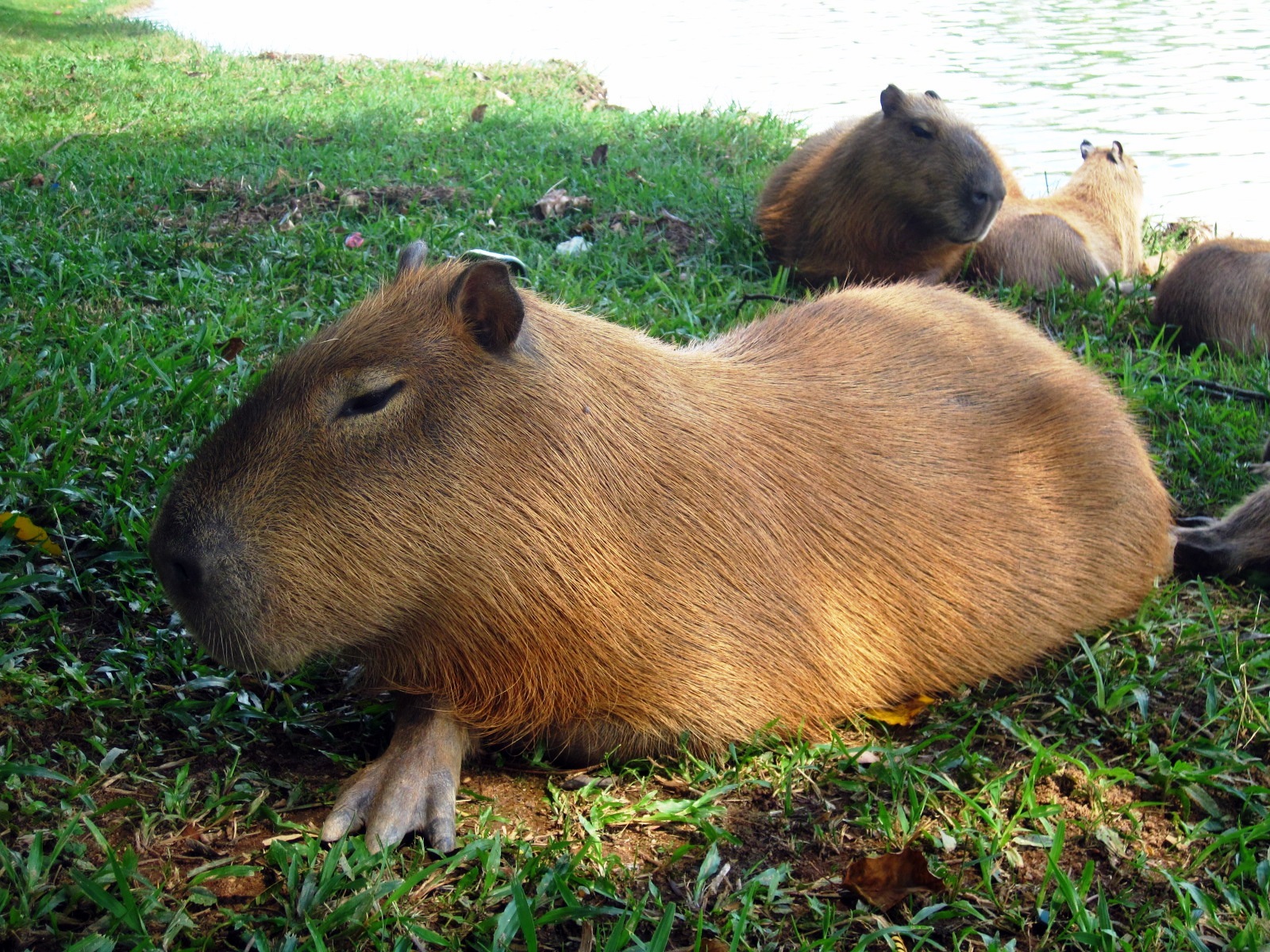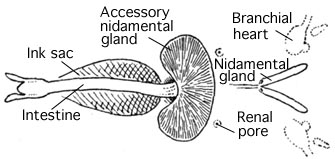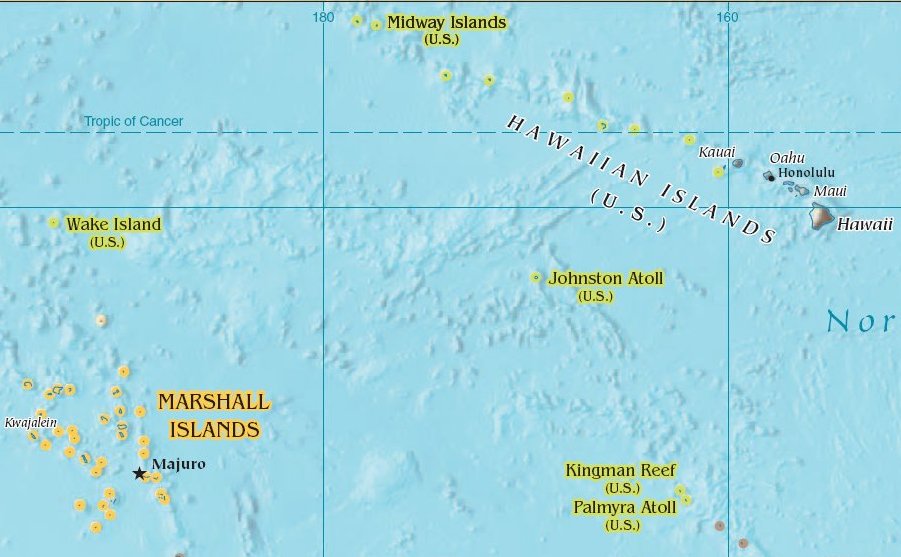|
Crested Bandfish
The crested bandfish (''Lophotus guntheri'') is a species of crestfish in the family Lophotidae. It has a long string-like body, with large eyes, a red dorsal fin, elongated leading rays, and a short anal fin near the caudal fin. It grows up to 2 metres in length. Etymology The species was presumably named for Albert Günther, an ichthyologist at the British Museum (Natural History).Dianne J. Bray (2020''Lophotus guentheri''Fishes of Australia. Retrieved June 20, 2020. In his formal description, Johnston named the species ''guntheri'', although the correct spelling for species named after Günther is ''guentheri''. The species' common names include the crested bandfish, crestfish, unicorn fish and unicorn ribbon-fish. Distribution and ecology The crested bandfish is a marine pelagic species, found at depths up 90 metres, although it may occur at depths up to 300 metres. The species has been found in four locations in the western Pacific: in Australia, near Emu Bay, Tasmania and ... [...More Info...] [...Related Items...] OR: [Wikipedia] [Google] [Baidu] |
Crestfish
Crestfishes, family Lophotidae, are lampriform fishes found in most oceans. It consists of two extant and four extinct genera. They are elongated, ribbon-like fishes, silver in color, found in deep tropical and subtropical waters worldwide. Their scientific name is from Greek language, Greek ''lophos'' meaning "crest" and refer to the crest (part of the dorsal fin) that emerges from the snout and head; this structure gives them their other name of unicorn fishes. The extant genera all possess ink sacs that open into their cloacae from which they can produce a cloud of black ink when threatened (as in many cephalopods). References Lophotidae {{Lampriformes-stub Animal families ... [...More Info...] [...Related Items...] OR: [Wikipedia] [Google] [Baidu] |
Taiwan
Taiwan, officially the Republic of China (ROC), is a country in East Asia, at the junction of the East and South China Seas in the northwestern Pacific Ocean, with the People's Republic of China (PRC) to the northwest, Japan to the northeast, and the Philippines to the south. The territories controlled by the ROC consist of 168 islands, with a combined area of . The main island of Taiwan, also known as ''Formosa'', has an area of , with mountain ranges dominating the eastern two-thirds and plains in the western third, where its highly urbanised population is concentrated. The capital, Taipei, forms along with New Taipei City and Keelung the largest metropolitan area of Taiwan. Other major cities include Taoyuan, Taichung, Tainan, and Kaohsiung. With around 23.9 million inhabitants, Taiwan is among the most densely populated countries in the world. Taiwan has been settled for at least 25,000 years. Ancestors of Taiwanese indigenous peoples settled the island a ... [...More Info...] [...Related Items...] OR: [Wikipedia] [Google] [Baidu] |
Fauna Of Victoria (Australia)
Fauna is all of the animal life present in a particular region or time. The corresponding term for plants is ''flora'', and for fungi, it is ''funga''. Flora, fauna, funga and other forms of life are collectively referred to as ''biota''. Zoologists and paleontologists use ''fauna'' to refer to a typical collection of animals found in a specific time or place, e.g. the "Sonoran Desert fauna" or the "Burgess Shale fauna". Paleontologists sometimes refer to a sequence of faunal stages, which is a series of rocks all containing similar fossils. The study of animals of a particular region is called faunistics. Etymology ''Fauna'' comes from the name Fauna, a Roman goddess of earth and fertility, the Roman god Faunus, and the related forest spirits called Fauns. All three words are cognates of the name of the Greek god Pan, and ''panis'' is the Greek equivalent of fauna. ''Fauna'' is also the word for a book that catalogues the animals in such a manner. The term was first used by ... [...More Info...] [...Related Items...] OR: [Wikipedia] [Google] [Baidu] |
IUCN Red List Of Threatened Species
The International Union for Conservation of Nature (IUCN) Red List of Threatened Species, also known as the IUCN Red List or Red Data Book, founded in 1964, is the world's most comprehensive inventory of the global conservation status of biological species. It uses a set of precise criteria to evaluate the extinction risk of thousands of species and subspecies. These criteria are relevant to all species and all regions of the world. With its strong scientific base, the IUCN Red List is recognized as the most authoritative guide to the status of biological diversity. A series of Regional Red Lists are produced by countries or organizations, which assess the risk of extinction to species within a political management unit. The aim of the International Union for Conservation of Nature, IUCN Red List is to convey the urgency of conservation issues to the public and policy makers, as well as help the international community to reduce species extinction. According to International Unio ... [...More Info...] [...Related Items...] OR: [Wikipedia] [Google] [Baidu] |
IUCN Red List
The International Union for Conservation of Nature (IUCN) Red List of Threatened Species, also known as the IUCN Red List or Red Data Book, founded in 1964, is the world's most comprehensive inventory of the global conservation status of biological species. It uses a set of precise criteria to evaluate the extinction risk of thousands of species and subspecies. These criteria are relevant to all species and all regions of the world. With its strong scientific base, the IUCN Red List is recognized as the most authoritative guide to the status of biological diversity. A series of Regional Red Lists are produced by countries or organizations, which assess the risk of extinction to species within a political management unit. The aim of the IUCN Red List is to convey the urgency of conservation issues to the public and policy makers, as well as help the international community to reduce species extinction. According to IUCN the formally stated goals of the Red List are to provide ... [...More Info...] [...Related Items...] OR: [Wikipedia] [Google] [Baidu] |
Least Concern
A least-concern species is a species that has been categorized by the International Union for Conservation of Nature (IUCN) as evaluated as not being a focus of species conservation because the specific species is still plentiful in the wild. They do not qualify as threatened, near threatened, or (before 2001) conservation dependent. Species cannot be assigned the "Least Concern" category unless they have had their population status evaluated. That is, adequate information is needed to make a direct, or indirect, assessment of its risk of extinction based on its distribution or population status. Evaluation Since 2001 the category has had the abbreviation "LC", following the IUCN 2001 Categories & Criteria (version 3.1). Before 2001 "least concern" was a subcategory of the "Lower Risk" category and assigned the code "LR/lc" or lc. Around 20% of least concern taxa (3261 of 15636) in the IUCN database still use the code "LR/lc", which indicates they have not been re-evalua ... [...More Info...] [...Related Items...] OR: [Wikipedia] [Google] [Baidu] |
Defence Mechanism
In psychoanalytic theory, a defence mechanism (American English: defense mechanism), is an unconscious psychological operation that functions to protect a person from anxiety-producing thoughts and feelings related to internal conflicts and outer stressors. The idea of defence mechanisms comes from psychoanalytic theory, a psychological perspective of personality that sees personality as the interaction between three components: id, ego, and super-ego. These psychological strategies may help people put distance between themselves and threats or unwanted feelings, such as guilt or shame. Defence mechanisms may result in healthy or unhealthy consequences depending on the circumstances and frequency with which the mechanism is used.Utah Psych. "Defense Mechanisms" 2010. Retrieved on 05 October 2013. Defence mechanisms ... [...More Info...] [...Related Items...] OR: [Wikipedia] [Google] [Baidu] |
Ink Sac
An ink sac is an anatomical feature that is found in many cephalopod mollusks used to produce the defensive cephalopod ink. With the exception of nocturnal and very deep water cephalopods, all Coleoidea (squid, octopus and cuttlefish) which dwell in light conditions have an ink sac, which can be used to expel a cloud of dark ink in order to confuse predators. The ink sac is a muscular bag which originated as an extension of the hind gut; it is a modified hypobranchial gland.Nair, J.R., D. Pillai, S.M. Joseph, P. Gomathi, P.V. Senan & P.M. Sherief (2011). ''Indian Journal of Geo-Marine Sciences'' 40(1): 13–27. It lies beneath the gut and opens into the anus, into which its contents – almost pure melanin – can be squirted; its proximity to the base of the funnel means that the ink can be distributed by ejected water as the cephalopod uses its jet propulsion. The ejected cloud of melanin is bound by mucus Mucus ( ) is a slippery aqueous secretion produced by, and c ... [...More Info...] [...Related Items...] OR: [Wikipedia] [Google] [Baidu] |
Cephalopods
A cephalopod is any member of the molluscan Taxonomic rank, class Cephalopoda (Greek language, Greek plural , ; "head-feet") such as a squid, octopus, cuttlefish, or nautilus. These exclusively marine animals are characterized by bilateral symmetry, bilateral body symmetry, a prominent head, and a set of cephalopod arm, arms or tentacles (muscular hydrostats) modified from the primitive molluscan foot. Fishers sometimes call cephalopods "inkfish", referring to their common ability to squirt Cephalopod ink, ink. The study of cephalopods is a branch of malacology known as teuthology. Cephalopods became dominant during the Ordovician period, represented by primitive nautiloids. The class now contains two, only distantly related, Extant taxon, extant subclasses: Coleoidea, which includes octopuses, squid, and cuttlefish; and Nautiloidea, represented by ''Nautilus (genus), Nautilus'' and ''Allonautilus''. In the Coleoidea, the molluscan shell has been internalized or is absent, where ... [...More Info...] [...Related Items...] OR: [Wikipedia] [Google] [Baidu] |
Johnston Atoll
Johnston Atoll is an unincorporated territory of the United States, currently administered by the United States Fish and Wildlife Service (USFWS). Johnston Atoll is a National Wildlife Refuge and part of the Pacific Remote Islands Marine National Monument. It is closed to public entry, and limited access for management needs is only granted by Letter of Authorization from the United States Air Force and a Special Use Permit from the U.S. Fish and Wildlife Service. For nearly 70 years, the isolated atoll was under the control of the U.S. military. During that time, it was variously used as a naval refueling depot, an airbase, a testing site for nuclear and biological weapons, a secret missile base, and a site for the storage and disposal of chemical weapons and Agent Orange. Those activities left the area environmentally contaminated, and monitoring continues. The island is home to thriving communities of nesting seabirds and has significant marine biodiversity. USFWS teams ca ... [...More Info...] [...Related Items...] OR: [Wikipedia] [Google] [Baidu] |
Lophotidae
Crestfishes, family Lophotidae, are lampriform fishes found in most oceans. It consists of two extant and four extinct genera. They are elongated, ribbon-like fishes, silver in color, found in deep tropical and subtropical waters worldwide. Their scientific name is from Greek ''lophos'' meaning "crest" and refer to the crest (part of the dorsal fin) that emerges from the snout and head; this structure gives them their other name of unicorn fishes. The extant genera all possess ink sacs that open into their cloacae from which they can produce a cloud of black ink when threatened (as in many cephalopod A cephalopod is any member of the molluscan class Cephalopoda ( Greek plural , ; "head-feet") such as a squid, octopus, cuttlefish, or nautilus. These exclusively marine animals are characterized by bilateral body symmetry, a prominent head, ...s). References Lophotidae {{Lampriformes-stub Animal families ... [...More Info...] [...Related Items...] OR: [Wikipedia] [Google] [Baidu] |
New South Wales
) , nickname = , image_map = New South Wales in Australia.svg , map_caption = Location of New South Wales in AustraliaCoordinates: , subdivision_type = Country , subdivision_name = Australia , established_title = Before federation , established_date = Colony of New South Wales , established_title2 = Establishment , established_date2 = 26 January 1788 , established_title3 = Responsible government , established_date3 = 6 June 1856 , established_title4 = Federation , established_date4 = 1 January 1901 , named_for = Wales , demonym = , capital = Sydney , largest_city = capital , coordinates = , admin_center = 128 local government areas , admin_center_type = Administration , leader_title1 = Monarch , leader_name1 = Charles III , leader_title2 = Governor , leader_name2 = Margaret Beazley , leader_title3 = Premier , leader_name3 = Dominic Perrottet ( Liberal) , national_representation = Parliament of Australia , national_representation_type1 = Sen ... [...More Info...] [...Related Items...] OR: [Wikipedia] [Google] [Baidu] |




.jpg)

